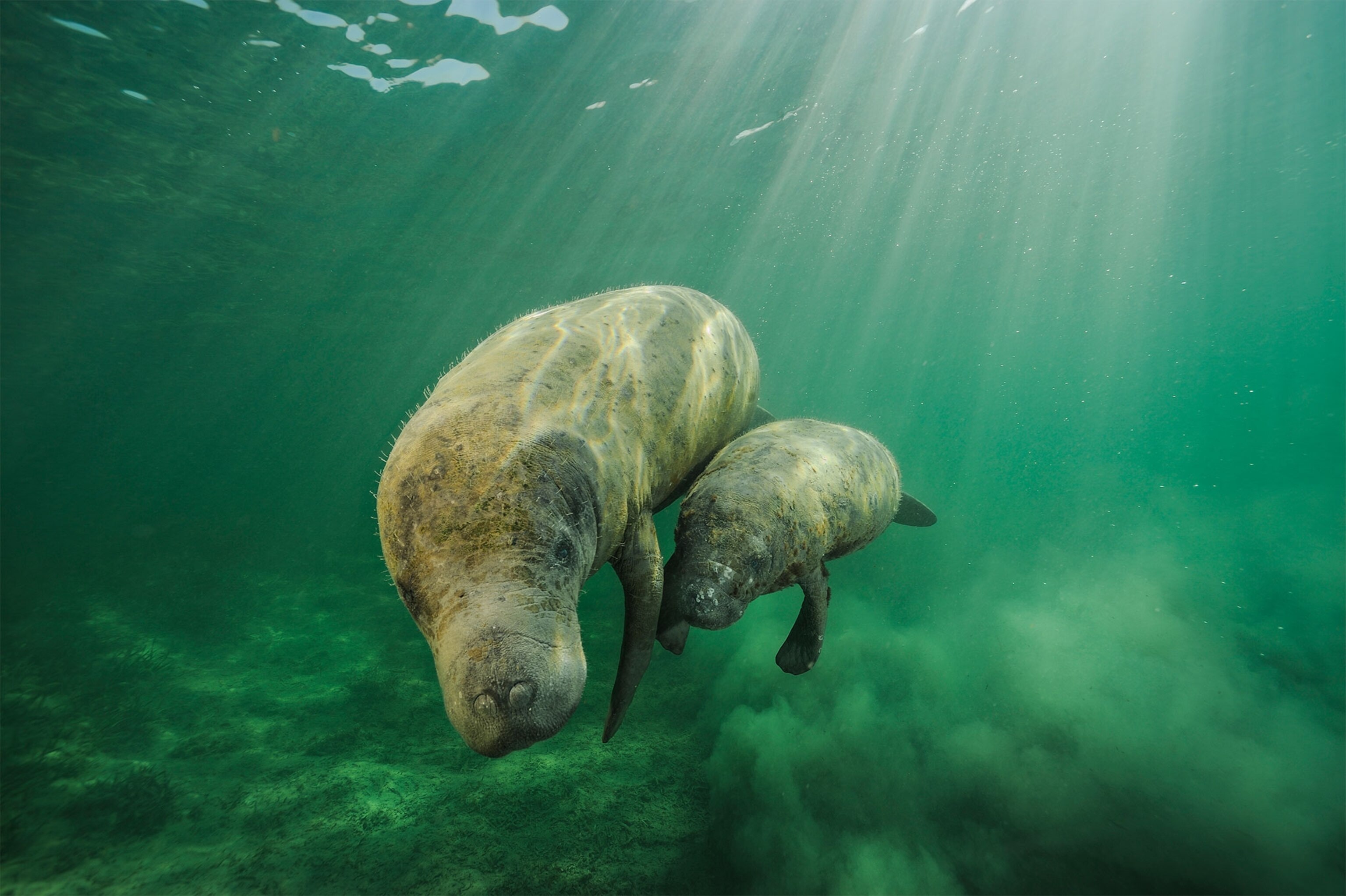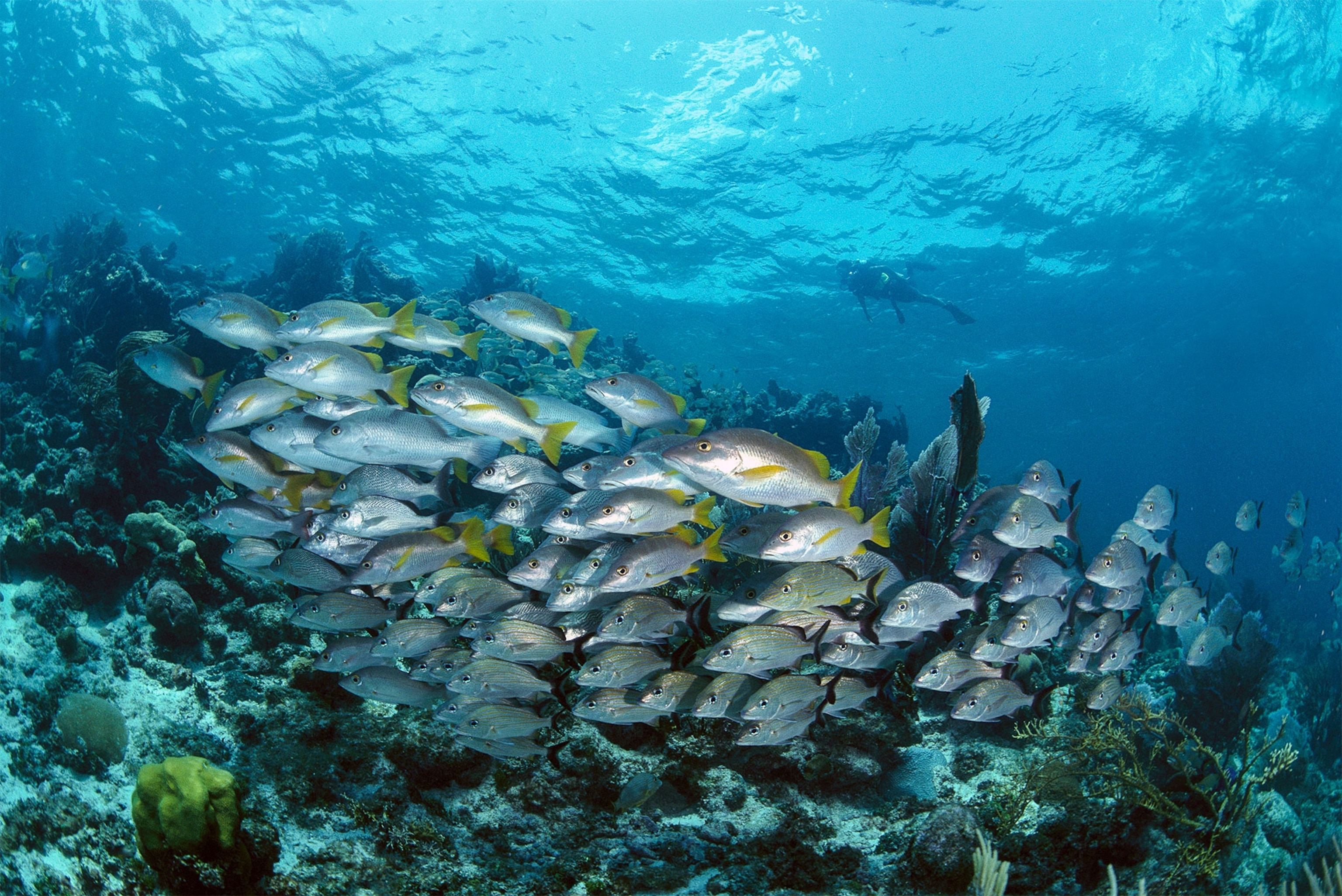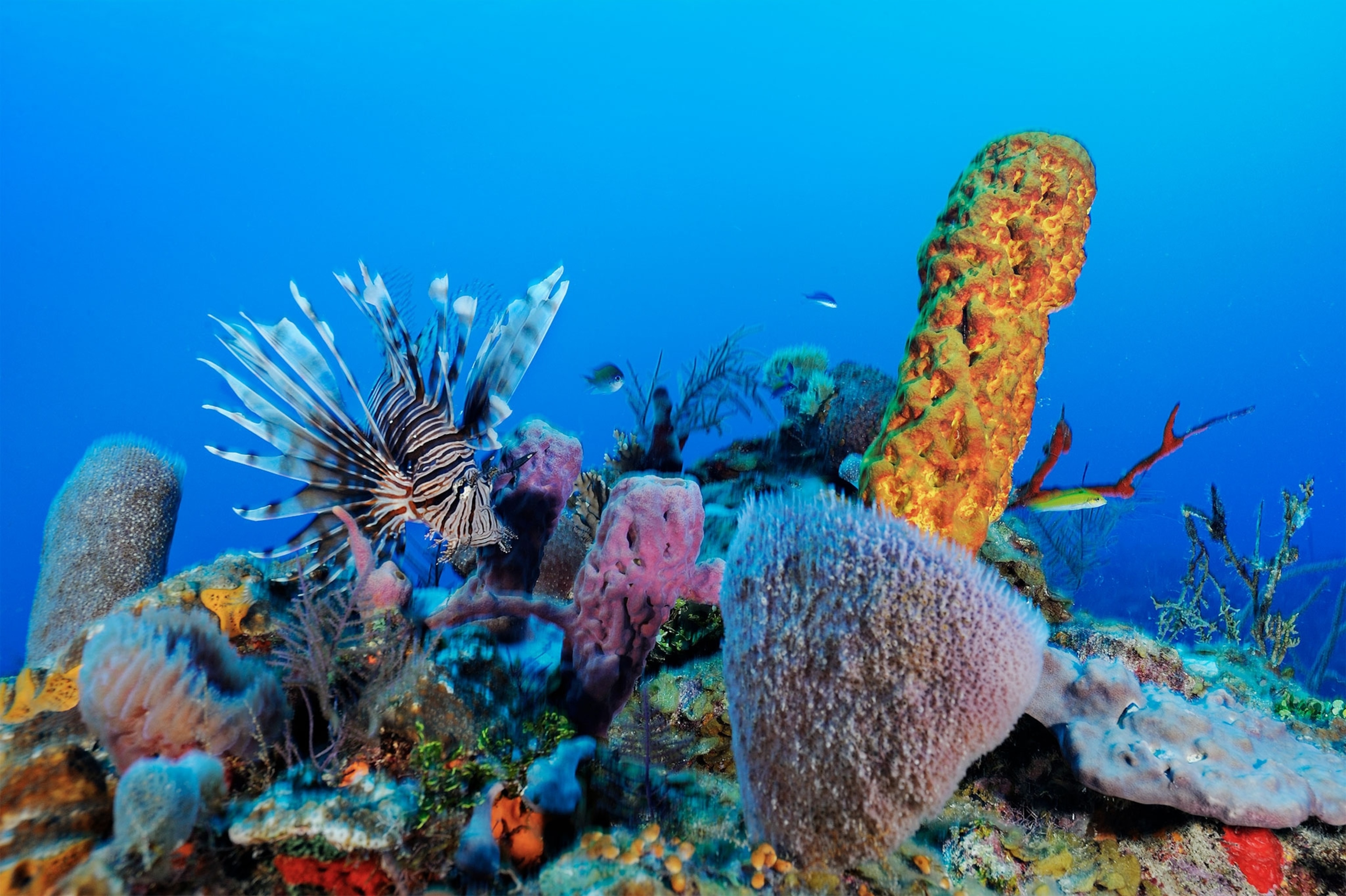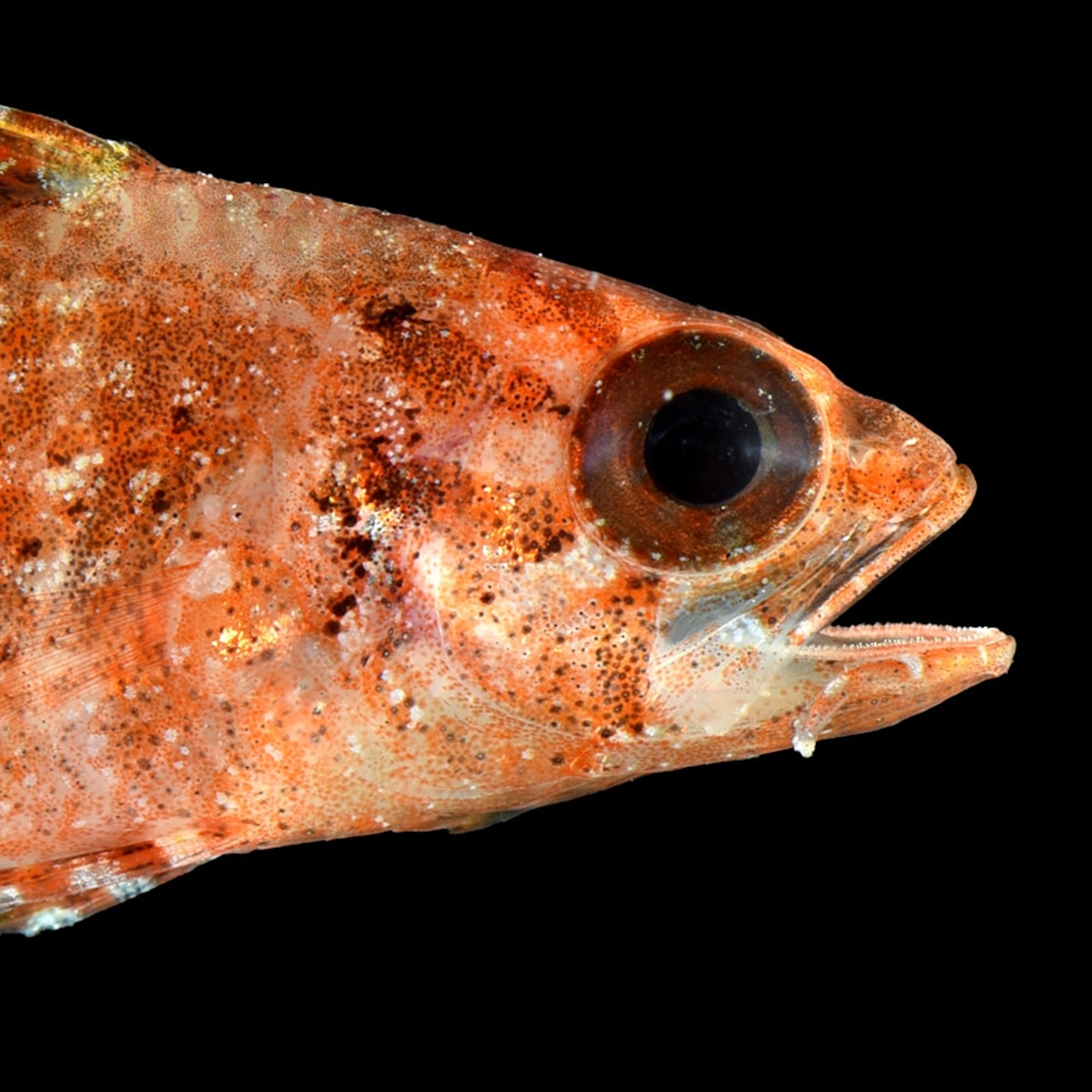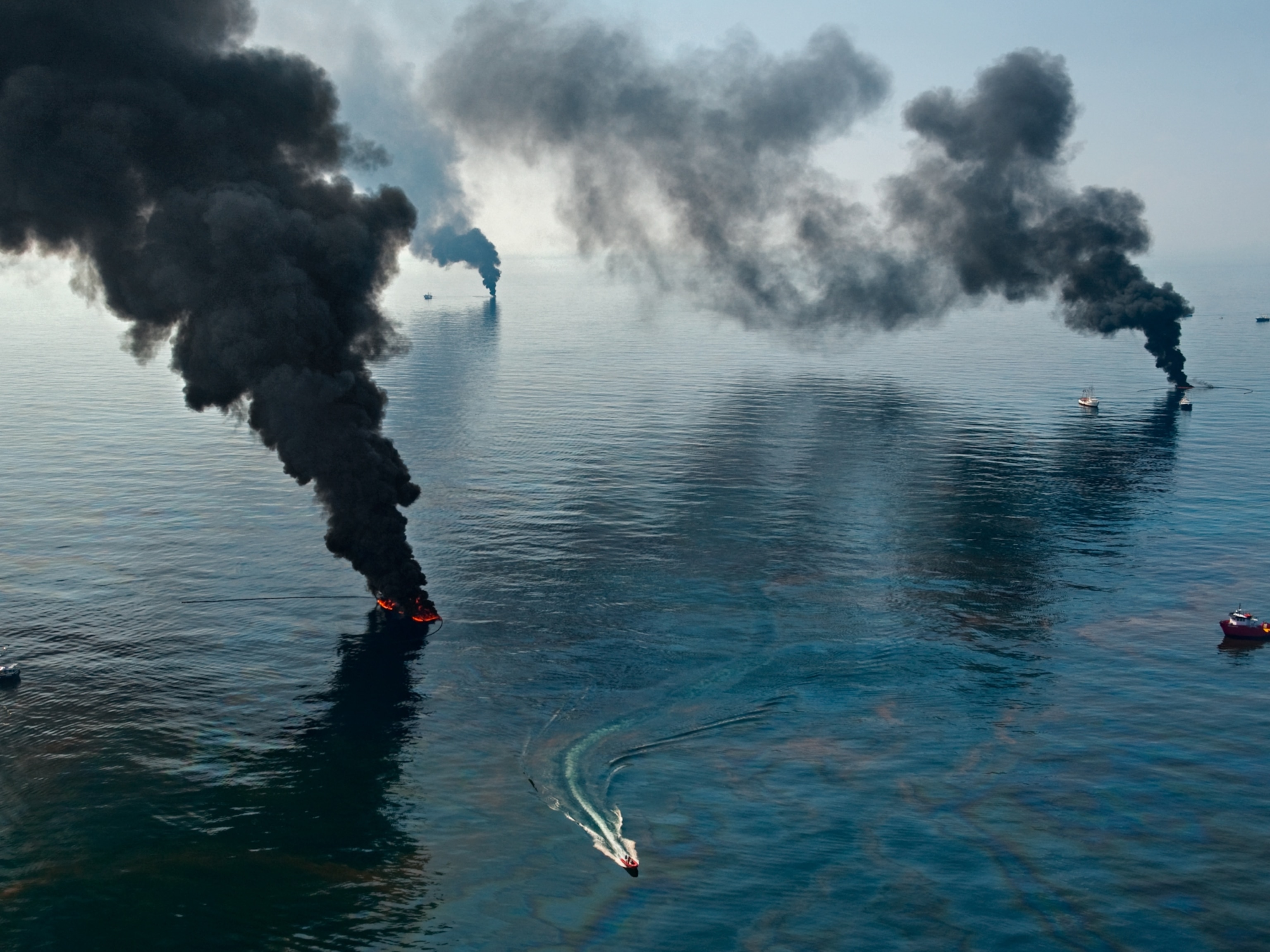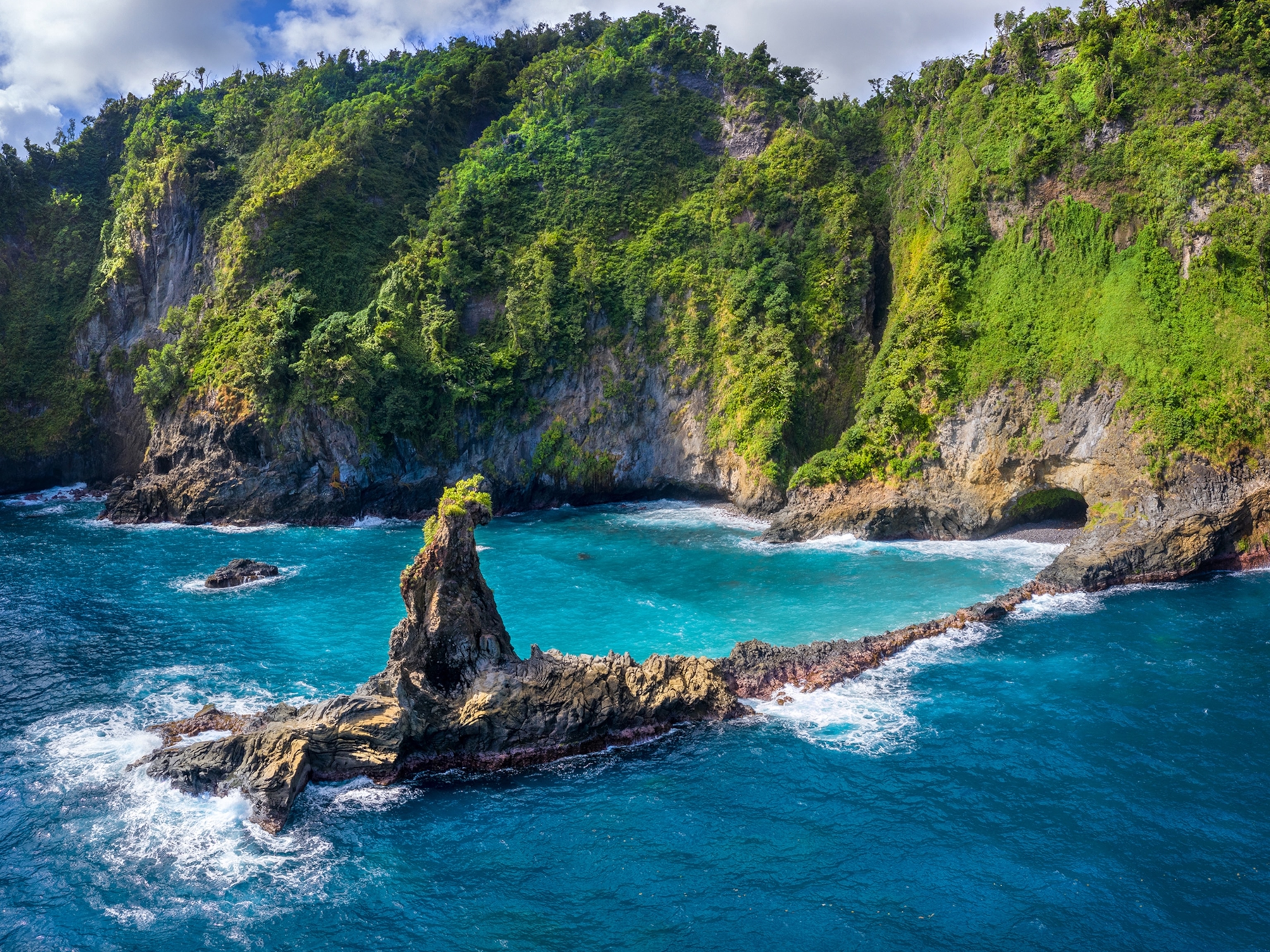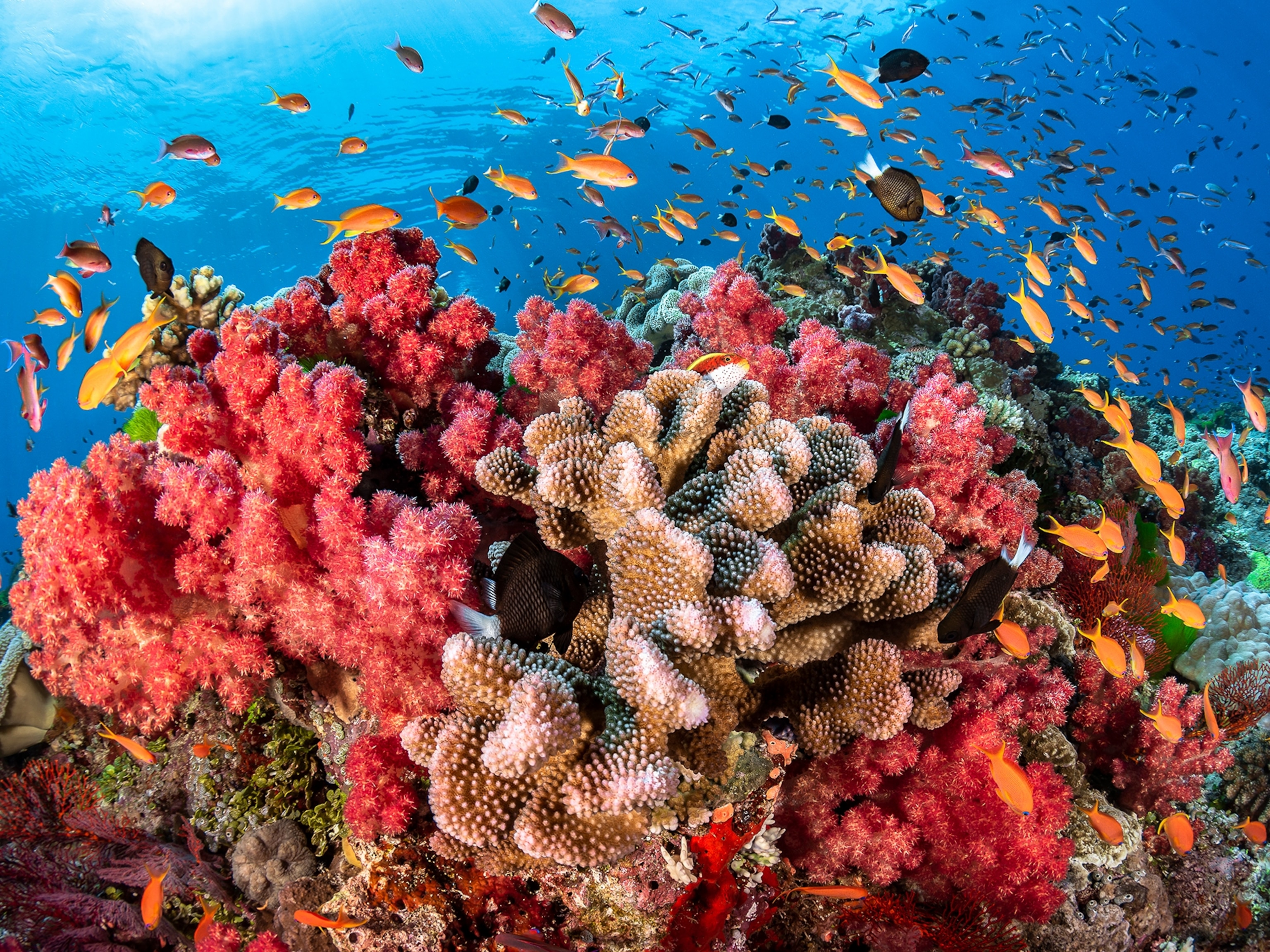
How One Country Is Restoring Its Damaged Ocean
Belize was criticized for putting its stunning coral reefs and other marine resources at risk. The country responded with innovative solutions.
Belize City — The Astrum helicopter company launches from a base less than five miles from where Belize City meets the Caribbean. In the backseat, to my left, is Belizean Senator Valerie Woods. Across from us are two representatives from international ocean protection organization Oceana, which organized the flight. The country’s minister of state, Carla Barnett, climbs into the front seat.
“I haven’t been in a helicopter for a long time,” she mutters, pulling on her headset. The doors shut, and we’re off.

As we rise above the trees, Belize City starts to spread out in front of us. But that’s not our destination. Side-skirting downtown, we head out over the water—where the true treasures lay.
The Mesoamerican Reef stretches some 700 miles from Mexico’s Yucatan Peninsula through Guatemala, to Honduras’ Bay Islands. For 184.5 miles, the reef passes through Belizean waters. Along with the lagoons and atolls on either side of the main reef, the collection is known as the “Belize Barrier Reef System.”
Heading out over the water, we almost immediately fly over a manatee reserve. The Oceana country director, Janelle Chanona, tries to point one out below, but I miss it. Crossing over the reef—a thick ribbon of turquoise—we come to the Turneffe atoll, which is one of the country’s seven marine protected areas (MPAs). In the middle of the coral-ring is a lake of darker water. Tannins from the surrounding mangrove trees cause the color, Chanona explains—though, the trees are being chopped down at a rapid rate.
The pilot does a 360 over Turneffe, then keeps going. “Now we’re coming up to the Lighthouse Reef atoll,” Chanona says, also pointing out the Glover Reef atoll in the distance. As we near Lighthouse Reef, the water is so clear that we see a group of eagle rays and nurse sharks swimming below us. “The official welcome committee,” she jokes.
In his book Coral Reefs of The World, Charles Darwin called Belize home to “the most remarkable reef in the West Indies.” As we head further out, the turquoise alternates with various shades of blue. You can see the coral and rock formations through the water. The mosaic is mesmerizing.
“The colors get me every single time,” said Chanona, staring out at the Caribbean. From the front seat, Barnett agrees. “It’s gorgeous.”
In 1996, UNESCO designated the Belize Barrier Reef Reserve System a World Heritage Site, with the former British colony responsible for protection. It’s a mandate that the country has at times struggled with. By 2009, the site was on UNESCO’s “danger” list, with the organization saying that the country needed to enact better management and safeguards. But since that low point, Belize has worked to turn things around. And ocean conservation observers say there has been impressive progress. Hence the helicopter flight, which was a victory lap of sorts.
Just this December, Belize became the first country in the world to put a moratorium on all offshore oil exploration and drilling. Oceana had arranged the helicopter to help give politicians a sense of what they had protected, and what still needs to be done. “I’m really looking forward to getting off the endangered list,” Chanona said.
Healthier Reef

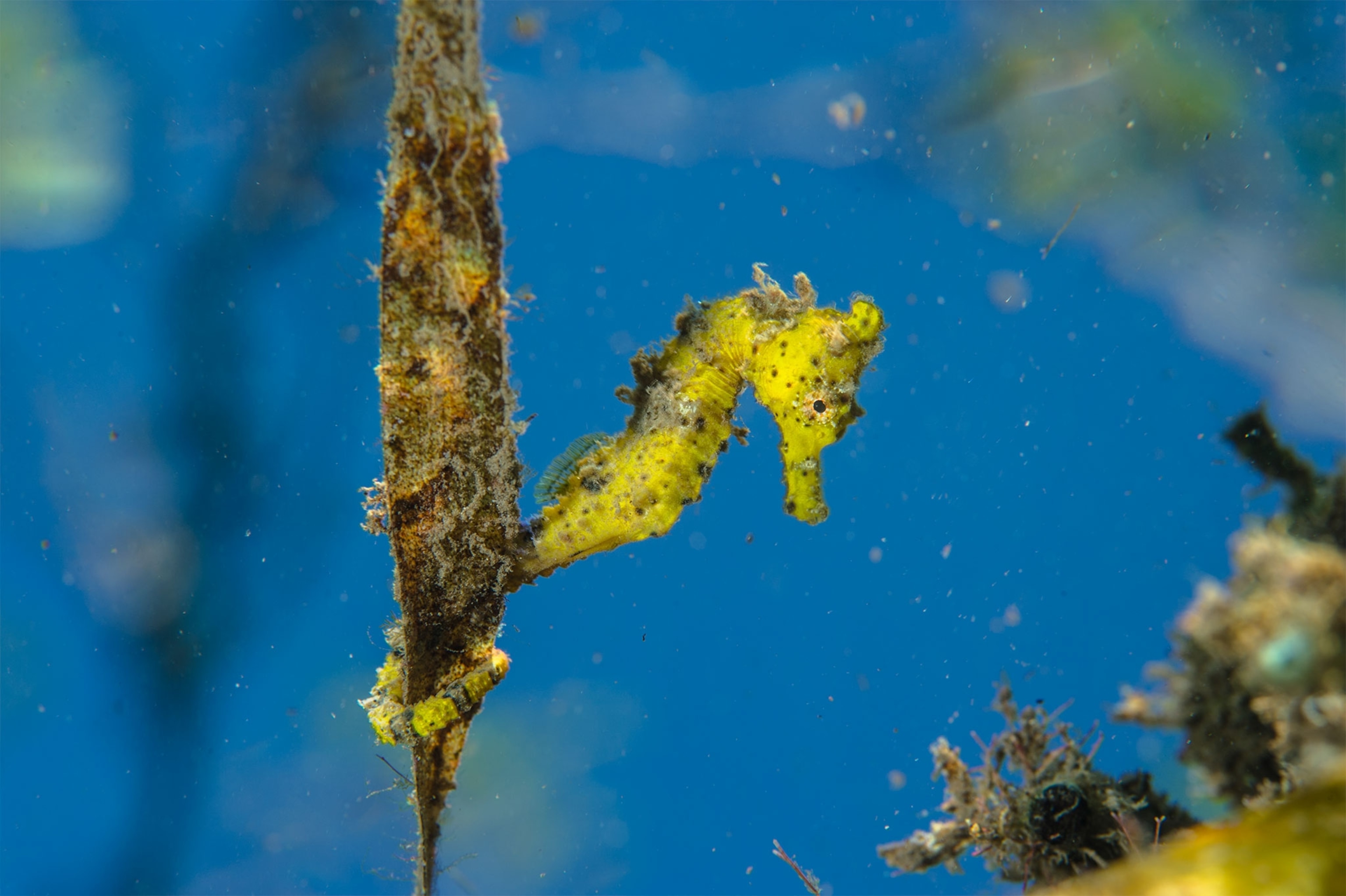

A day before the helicopter flight, the Healthy Reef for Healthy People Initiative (HRI) issued its latest report card on the state of the Mesoamerican Reef. The report uses four metrics to assess: live coral, fleshy macroalgae, commercial fishing, and herbivorous fish. In the ten years since the report was first issued, the overall health of the Mesoamerican Reef has improved from a 2.3 to a 2.8. Belize is currently at 2.8 as well. The scale, however, is out of 5.0.
Some argue that improvement should be faster. But reefs across the world are up against unprecedented threats, from development to climate change. So, the country’s slow creep is, in many ways, a step forward. “Still a ways to go,” Chanona said, when Barnett asked about the report. “But better than going the other direction.”
Many of Belize’s gains are tangible. There are, for example, special environmental taxes here that go directly to conservation and a booming eco-tourism market. In 2008, when the International Society for Reef Studies recommended that Mesoamerican Reef countries better protect parrot fish along the reef, Belize was the first to respond (less than a year later) with a law restricting their catch. The change is already showing up in HRI data.
Belize has tried to stem trap fishing and incursions from foreign trawlers as well. (Though enforcement remains challenging in many of these areas). Just last month, Belize announced plans to more than triple the size of its “no-take” fishing zones, from 3 to 10 percent, to further allow ocean wildlife to recover. The government also announced that it plans to ban single-use plastic and styrofoam products (bags, utensils, etc.) by Earth day, 2019.
Voting Over Oil
But the new oil ban is perhaps Belize’s biggest win yet. And the hardest fought.
In April 2010, the Deepwater Horizon oil well exploded, killing 11 people and spewing crude oil into the Gulf of Mexico. The flow lasted for 87 days, ultimately dumping 4.9 million barrels. The environmental impact was devastating, and people in Belize took notice.
“We already counted ourselves lucky that nothing had happened [here],” said Chanona.
Spurred by that spill, the environmental community here began looking more closely at Belize’s own oil landscape. Buried in the public record, advocates found a map showing oil concessions in the country. According to Chanona, they were shocked to find that “everything—the entire marine territory—had been blocked off and sold.”
That sent the fight into overdrive, with Oceana and a collective of other conservation groups leading the way. In 2011, campaigners gathered more than 20,000 signatures, calling for the issue to be put to a national referendum. But the government disqualified 8,000 of the signatures, saying they were illegible, and the official vote was called off. So, activists organized an unofficial version of their own.
By 2012, the environmental community had fanned out across the country to promote what they called a “People’s Referendum.” It would be a simple yes-no vote asking people whether to allow offshore oil drilling or exploration.
Mark Henry runs a taxi service in Belize City, and remembers hearing about the campaign on the news. He voted against oil activity. As did roughly 96 percent of the 29,235 total participants. “I’m definitely not interested in more oil,” said Henry. “There’s nothing [you] could tell me that would make me interested in risking the oceans.”
In 2013, the Belize Supreme Court declared the country’s oil concessions and contracts invalid because of inadequate environmental impact assessments. And, a few years later, the prime minister said the government had adopted a policy-based moratorium against drilling around the reef and protected sites. While not a total ban, many conservationists saw the moves as progress. Then, the ships showed up.
In late October 2016, Belizeans spotted what they eventually discovered was a seismic ship off the coast, ready to explore the ocean floor. “The only reason to collect seismic [information] is for oil,” said Chanona. And while the plans were part of the public record, they weren’t advertised. She says she found out about them in a late night phone call. “That showed how real the threat was,” she said.
The environmental community jumped back into action. This time, they wanted a law.
Changing the Law
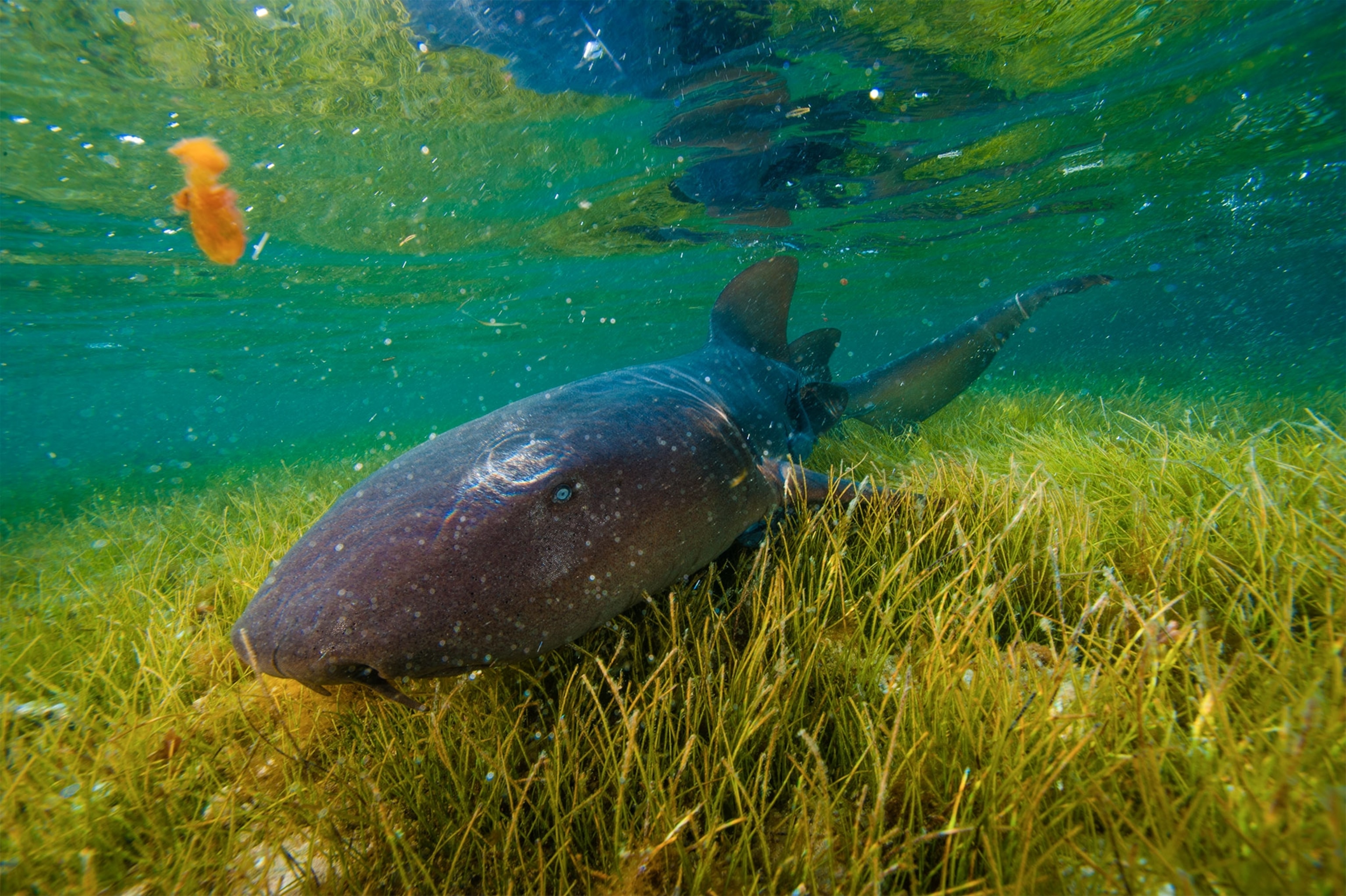
It took over a year of back and forth for the measure to work its way through the Belizean government. Chanona said that the wife of the prime minister, Kim Barrow, was a particularly strong advocate. (“Once I’m passionate about something, they’ll hear from me,” said Mrs. Barrow. “It certainly needed pushing.”) And, on December 30th of last year, the "Petroleum Operations (Maritime Zone Moratorium) Act" was signed into law.
The new legislation calls for “a moratorium on the exploration for and exploitation of petroleum and other petroleum operations in the maritime zone of Belize.” Some conservationists are a bit disappointed by the choice of the word moratorium, instead of ban. “A moratorium, by definition, is temporary,” said environmental lawyer and advocate Candy Gonzalez. And most everyone agrees that the law could always be overturned in the future. But, on the whole, environmentalists see it as a decidedly positive, and pioneering, step.
While other countries have laws that are more limited in scope, such as Mexico’s ban on oil in the Yucatan, Belize is likely the first country to ban oil exploration and drilling in all of its territorial waters, says Oceana. Moreover, the Belizean government approved the legislation without knowing exactly how much oil they were giving up.
Belize first discovered onshore oil in 2005, at a site known as Spanish Lookout. That led to the formation of the country’s only oil company—Belize Natural Energy (BNE)—and a production capacity of a few thousand barrels a day. Some environmental advocates say that even those small quantities pose a threat in the form of potential spills or contamination. But everyone, including BNE, agrees that working offshore would increase those risks exponentially. And low oil prices are making it an impossible gamble for investors to take at the moment.
Given the uncertainties, there hasn’t been significant offshore mapping, let alone drilling, in Belize for decades. Senator Woods believes that’s the way it should stay, even if a change in oil prices sparks renewed interest. “It doesn’t matter how many studies you bring to me,” said Woods. “It’s just not worth the risk.”
While others are merely resigned to the new law, some take issue with how the decision was made in the first place. Andre Cho, the director of the Geology and Petroleum Department in the Ministry of Economic Development, Petroleum, Investment, Trade and Commerce, says he heard news of the moratorium on TV like everyone else. “There was no debate, no evaluation, no discussion, no technical review,” Cho said. “Nothing.”
Even some of the moratorium proponents, including Minister Barnett, argue that, at the very least, more data could have been useful. “If I had my druthers, I would have wanted to know how much oil is there,” said Barnett. She and Woods represent opposite political parties. “[But] that’s water under the bridge.”

Impossibly Blue
After Turneffe, we take a quick swing past a shipwreck. Then the helicopter heads for the flight’s main attraction: a 407-foot deep sinkhole nearly 50 miles off the coast. The “Blue Hole,” as it’s known, sits near the center of the Lighthouse atoll, and is one of Belize’s best-known tourist attractions. “Look at that,” says Barnett from the front seat, as we approach. “Look at that.”
The deep blue circle of water is ringed by rock-like coral, and surrounded by lighter Caribbean blues and greens. Two tour boats are parked in the Blue Hole. Snorkelers are fanned out on one side, divers on the other. The pilot banks left, to circle above. We take a few counterclockwise laps at 500 feet. Then a few clockwise laps at 1,000 feet. Phones come out, cameras click, and sun spots abound on the perfectly clear day. Everyone is in awe, even the pilot, who has been on the trip hundreds of times. “Always an amazing sight,” remarks Chanona.
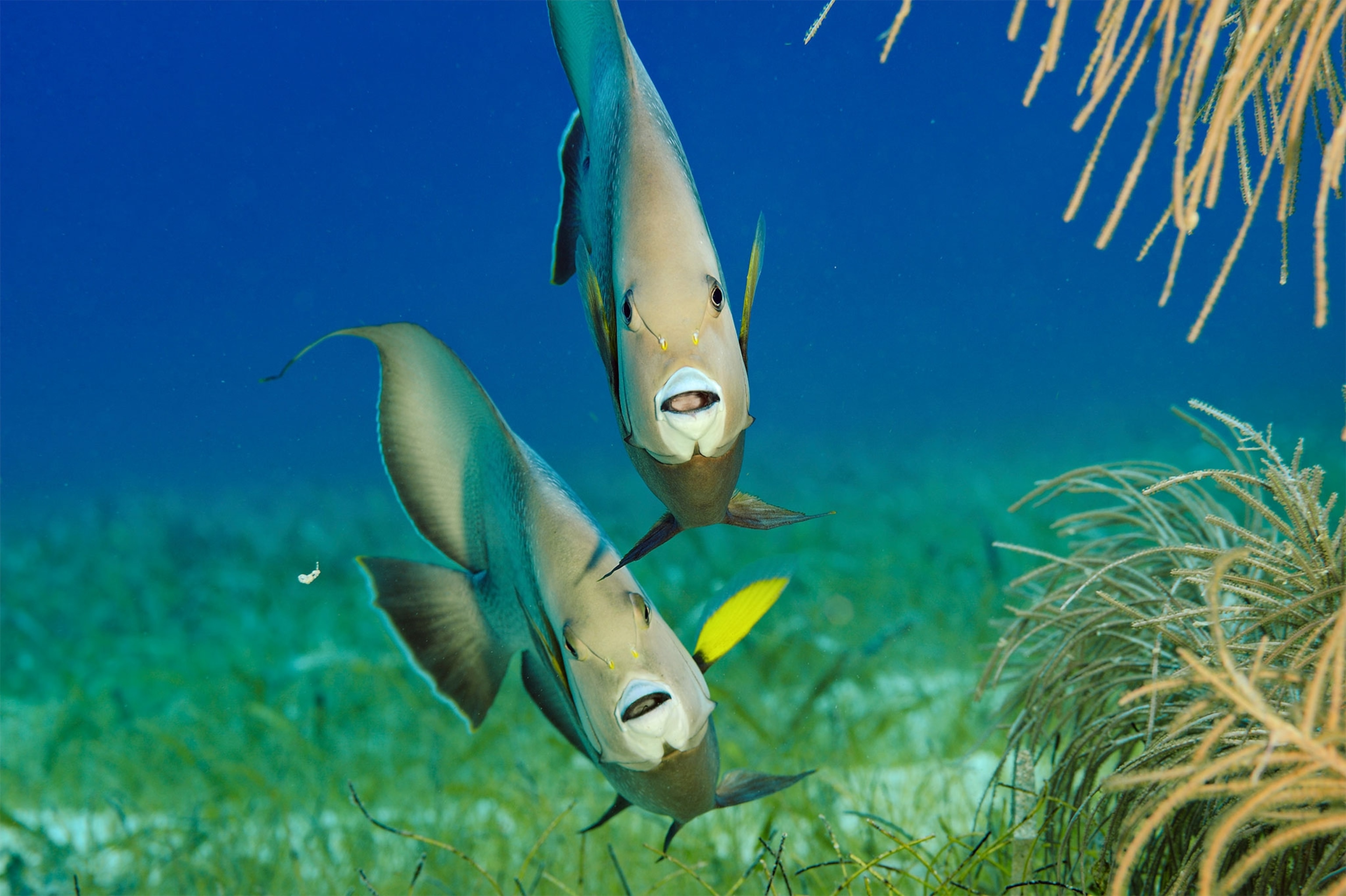
After the last pass around the Blue Hole, we straighten out and head back toward land, seeing one more popular tourist site, Half-Moon Caye, along the way. As we get closer to shore, the islands are increasingly dotted with hotels, new construction sites, and other manmade structures. At one point, Chanona says, someone proposed building a runway directly on top of the reef.
About five miles out, we buzz over more cruise ships. “Mein Schiff” [My Ship] is scrawled across a German one. Sunbathers, like the ones scattered across the deck, and other forms of tourism account for roughly fifteen percent of Belize’s GDP (and growing). But the development associated with the industry is also one of the myriad threats that the reef, and those trying to protect it, still face. Gill net fishing, invasive lionfish, and pollution runoff are all major issues as well.
Chanona isn’t sure yet which will be targeted for change next. That’s still under discussion. But the hope is that, with the moratorium moving the oil issue to the back burner, these other problems can now be more easily tackled. “[Oil was] an overarching threat,” she said. “Now that we have this moratorium, we can actually put conservation efforts where they need to be.”
The Global Picture
Belize’s conservationists hope their efforts could be a model for others around the world. “When coral reef countries come together, Belize is always seen as a leader,” said Melanie McField, the founder and director of HRI. Oceana scientist Tess Geers, who’s based at the organization’s headquarters in Washington, D.C., agrees that Belize has a unique vantage point. “Many big ocean questions are playing out on a smaller scale in Belize,” she said. “Because it’s a small country, it’s easier to see all the pieces at once.”
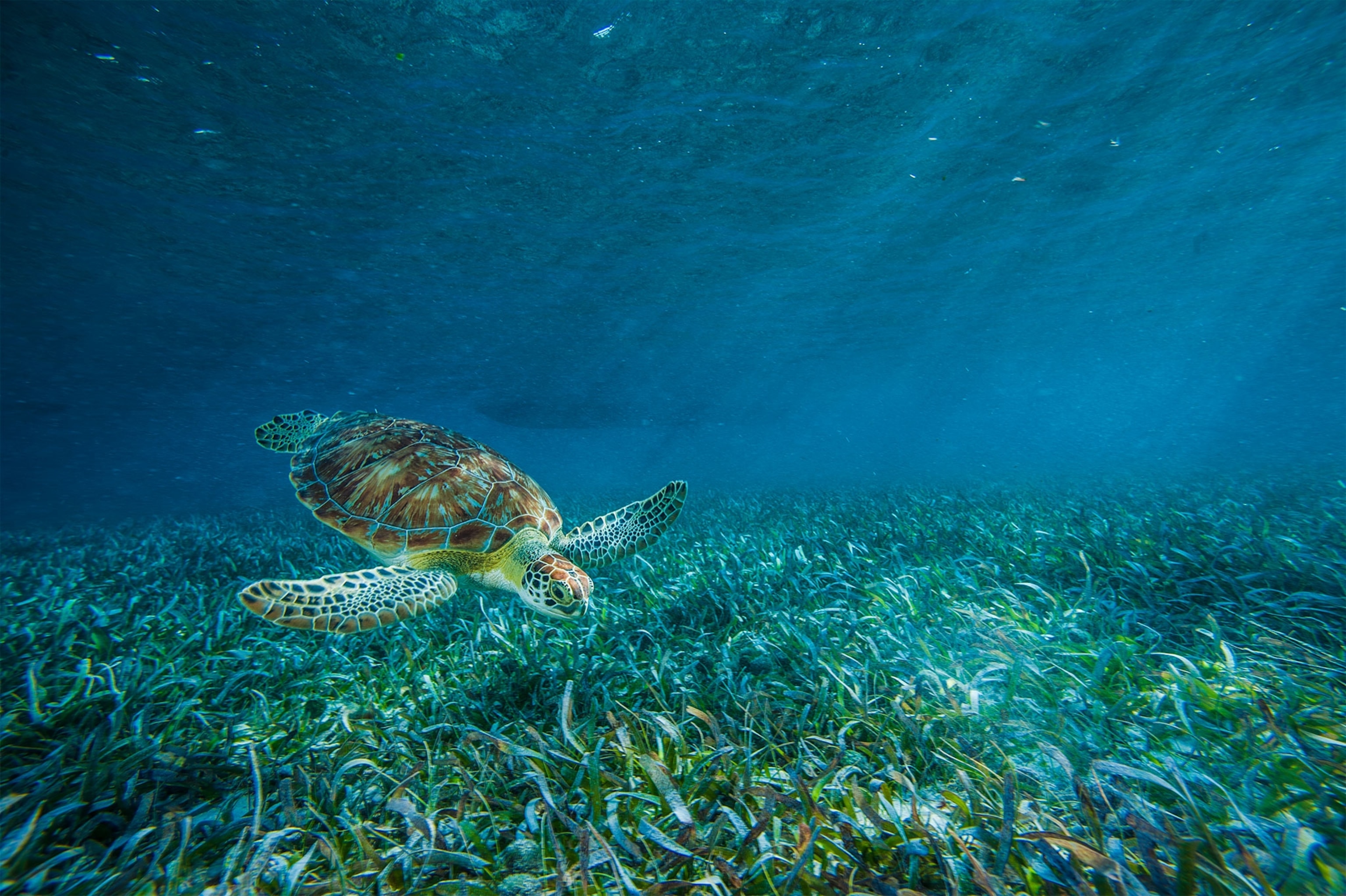
Larry Epstein, with the Environmental Defense Fund, notes Belize’s managed access fishing programs and the oil ban as examples of the country’s leadership. He says Belize has already been sharing their experiences with groups in Indonesia, Cuba, and the Philippines, among others.
Belizean groups say this type of global engagement is important because many of the pieces to the conservation puzzle lay outside of the country’s control. An oil spill elsewhere—like in Guatemala or Honduras, for example—could impact Belize, too. Illegal fishing coming in from the outside is a constant threat. And, of course, there’s climate change.
The HRI report card launch was held at a Radisson hotel in downtown Belize City. Among the various speakers was Lisa Carne, a marine biologist and founder of the non-profit Fragments of Hope, which focuses on coral restoration. She had come to update the group about coral bleaching. Over the last decade, she said, bleaching has become a near annual occurrence, with 2017 being one of the worst years yet. Last fall, she elaborated, abnormally high water temperatures impacted more than forty percent of the coral across ten study sites.
“Don’t think that [this is] going to be a random occurrence anymore. It needs to be part of your yearly plan,” said Carne, who also urged the group to prioritize the broader issue of fossil fuel dependence.
As Carne alluded to, much of the damage done to reefs may be irreversible. “If we used as our target the way the reef looked 50 years ago, it would be a lost cause,” says Les Kaufman, an ecologist at Boston University who has worked in Belize for decades. “The appropriate target is how would the reef look now if you stopped beating it with a two by four?”
On our way back to base, we pass over the barrier reef again. Stretching for miles in each direction, it fades into the horizon. Chanona hopes that flights like ours can help slow the “beating” its taking by showing politicians the value of protective measures like the oil moratorium. As the helicopter lands, and the rotors wind down, she reiterates her message to Barnett and Woods. It’s become a mantra, of sorts.
“What happens to the reef, happens to us,” said Chanona. “We cannot shoot the Golden Goose.”

